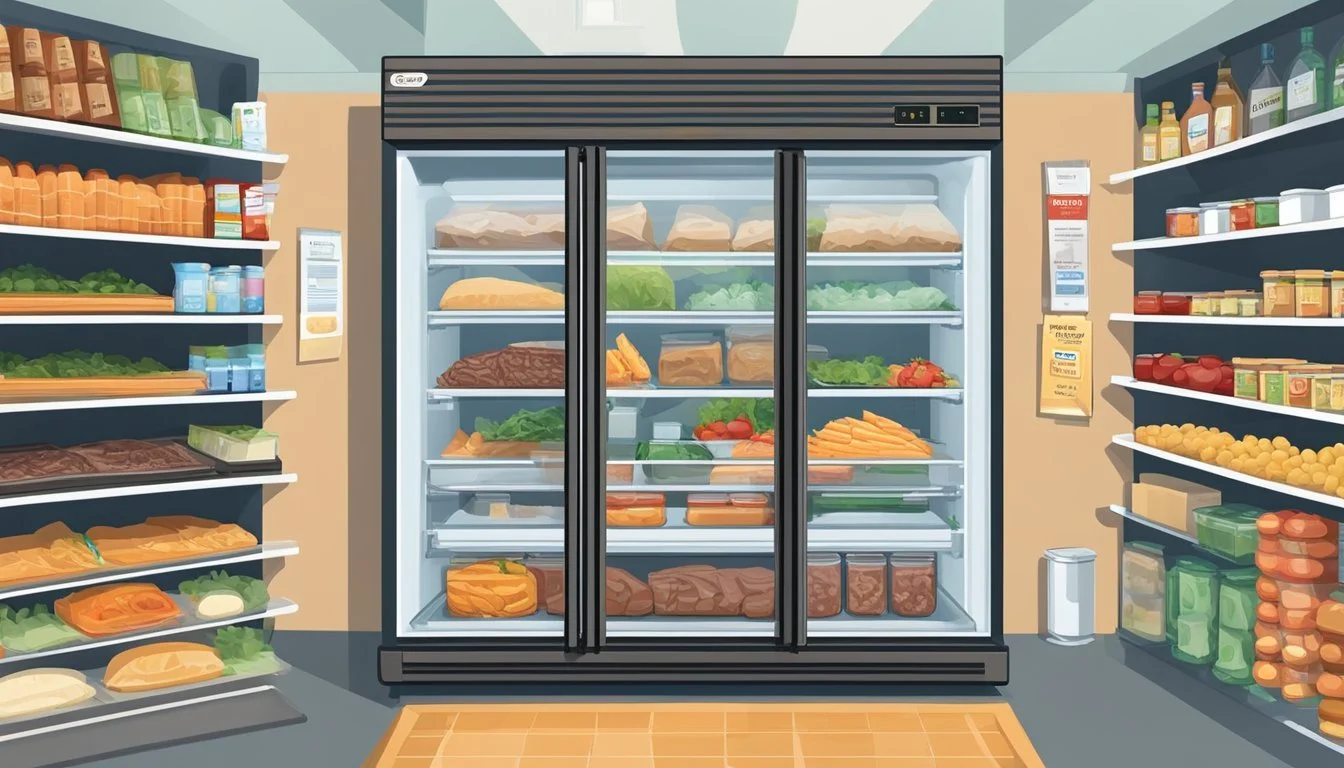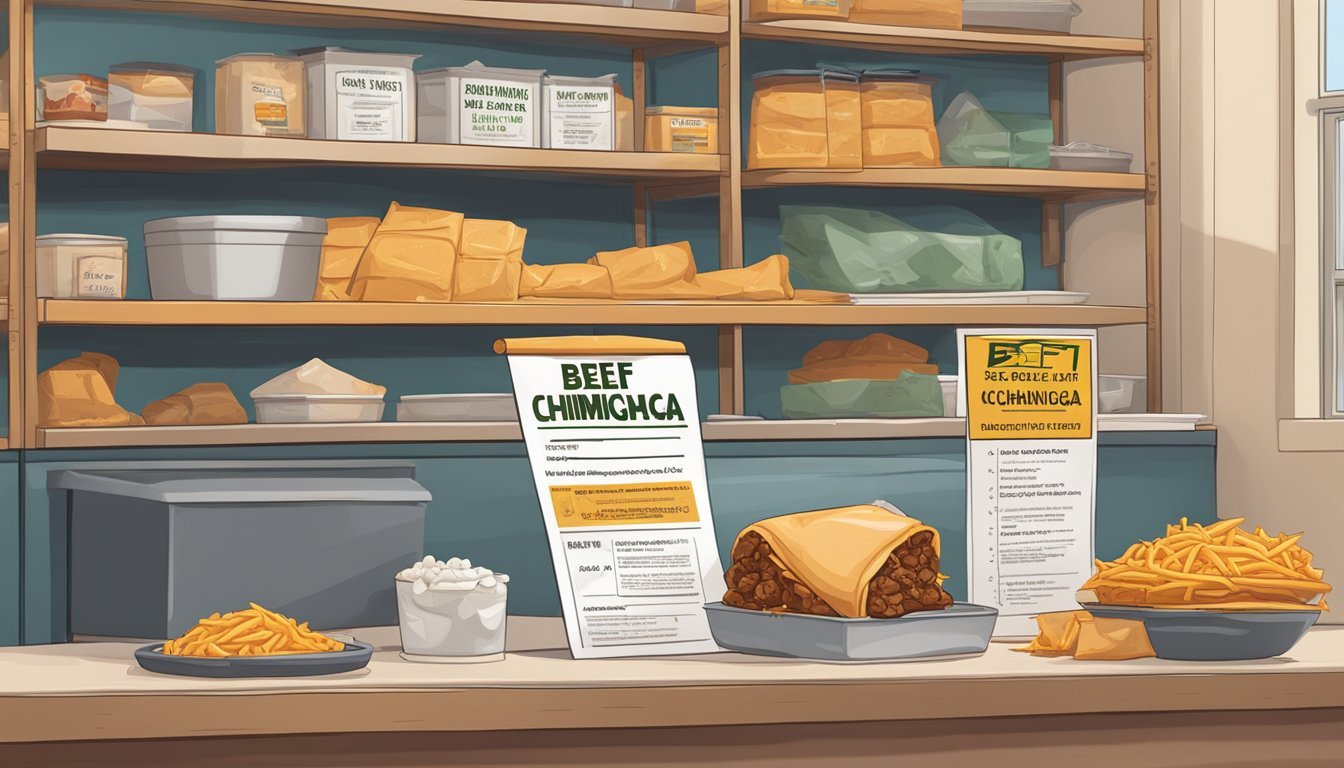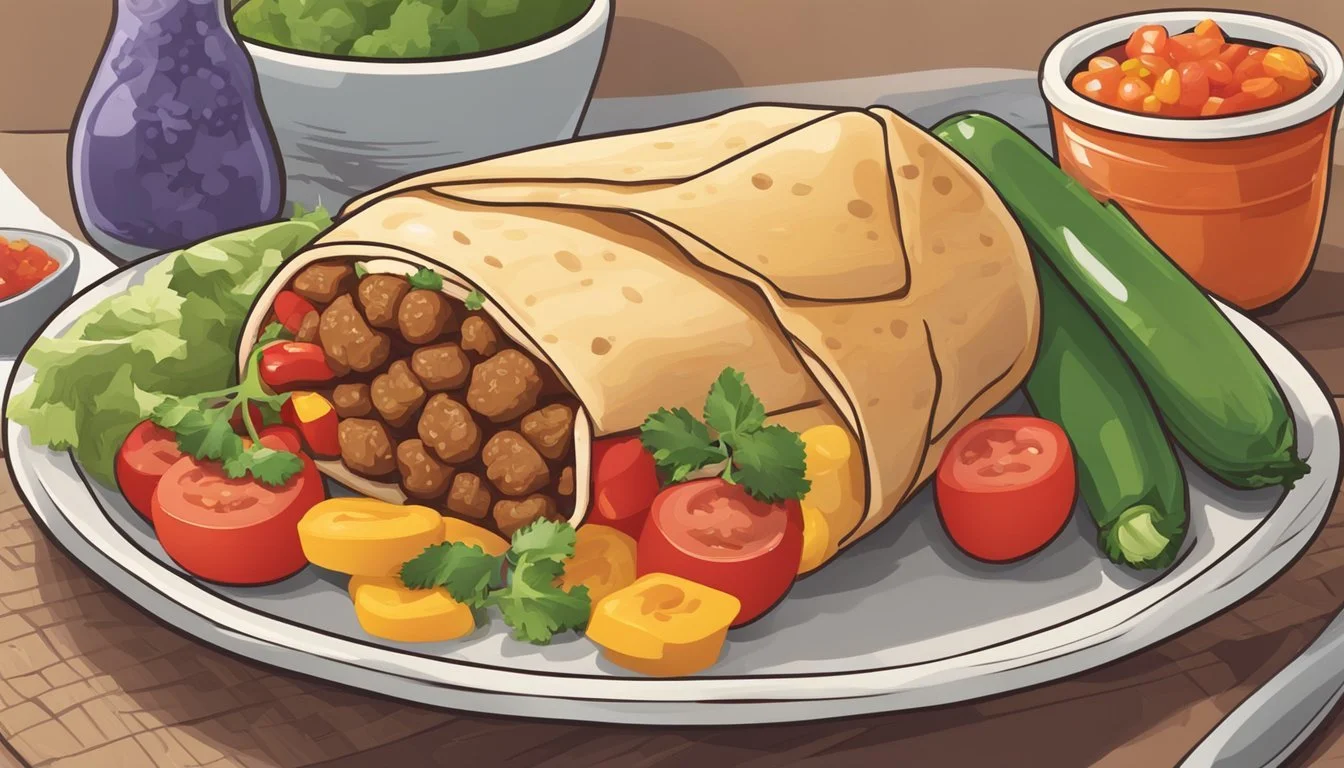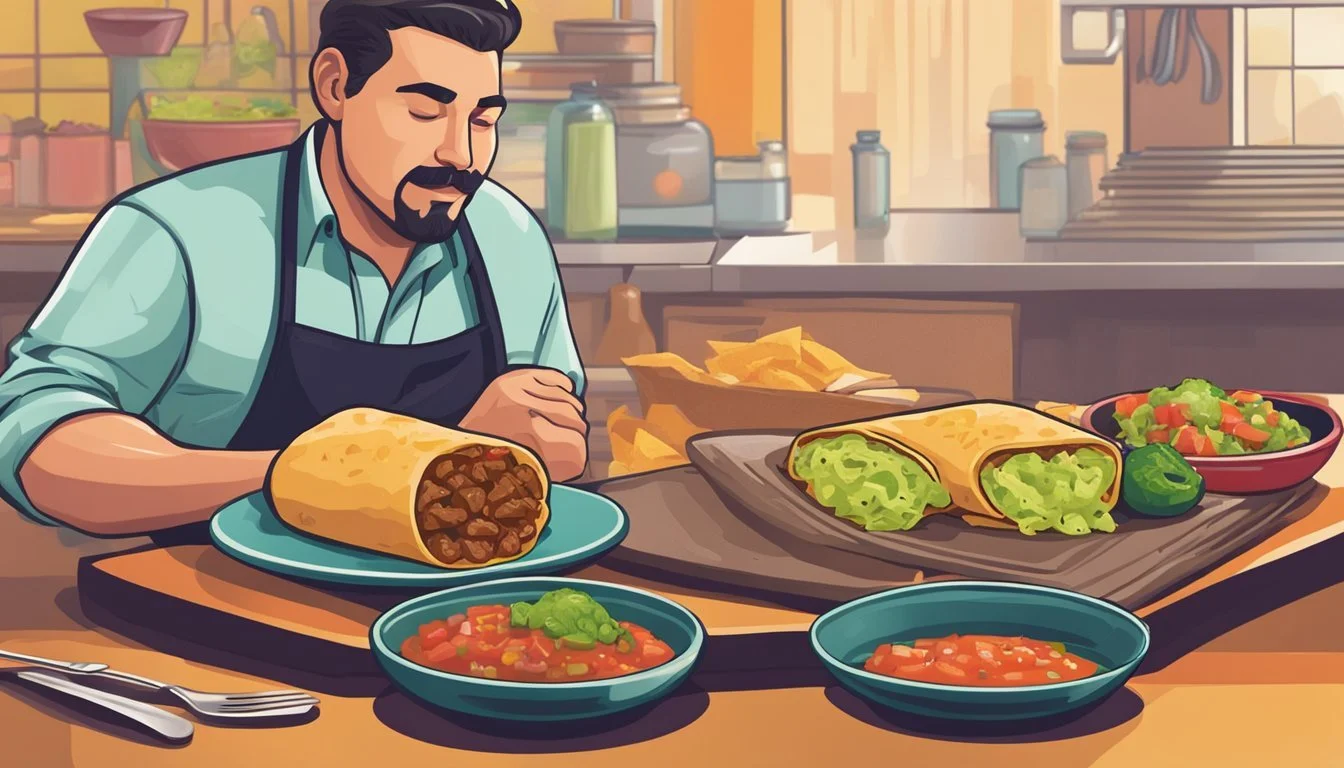How Long Do Beef Chimichangas Last?
Freshness Guide and Storage Tips
Beef chimichangas can be a delightful addition to your meal rotation, but it’s crucial to know how long they last to ensure food safety and enjoyment. When stored properly in the refrigerator, beef chimichangas can stay fresh for up to three days. For longer storage, they can be kept in the freezer for up to three months without significant loss of quality.
The key to maintaining the taste and safety of your chimichangas is proper storage. After cooling them down, wrap each one tightly in aluminum foil or place them in an airtight container. Label the containers with the date to keep track of their storage time.
Following a reliable chimichanga recipe can also play a role in the longevity of the dish. Whether baked, air-fried, or traditionally deep-fried, the method of preparing and cooking chimichangas can influence their texture when reheated. To achieve the best results, reheat previously frozen chimichangas in the oven for a crispy exterior and warm, flavorful interior.
Understanding Chimichangas
Chimichangas are a popular dish in Mexican cuisine, known for their crispy exterior and flavorful fillings. They can be prepared using different methods and ingredients, offering a variety of tastes and textures.
History and Origin
Chimichangas are believed to have originated in the southwestern United States, specifically in Arizona. The story goes that a cook accidentally dropped a burrito into a deep fryer, thus creating the first chimichanga. The dish quickly became a favorite, blending Mexican and American culinary traditions.
Over the years, chimichangas have become an iconic part of Tex-Mex cuisine, celebrated for their versatility and comforting flavors.
Traditional Ingredients
Chimichangas traditionally use flour tortillas as the outer wrap. The fillings often include seasoned beef, but chicken, pork, and vegetarian options are also common.
Key ingredients typically consist of ground beef, cheese, beans, and various seasonings such as cumin, garlic powder, and chili powder. Some recipes also add rice and vegetables to enhance the flavor and texture.
These ingredients are wrapped tightly in the tortilla to prevent any fillings from spilling out during cooking.
Baked Vs. Fried Preparation
Chimichangas can be either baked or fried, each method offering a different texture and taste. Fried chimichangas are cooked in hot oil until the tortilla is crispy and golden brown, which gives them a rich, crunchy texture.
Baked chimichangas, on the other hand, are brushed with oil or sprayed with cooking spray before being baked in the oven. This method results in a lighter, less greasy dish while still providing a crispy exterior.
Both variations are typically served with sides like rice, beans, sour cream, and various sauces. Whether fried or baked, chimichangas remain a delightful and versatile component of Mexican cuisine.
Storage Guidelines
Proper storage of beef chimichangas ensures they remain safe to eat and retain their flavor and texture. Follow best practices for refrigeration and freezing to extend their shelf life.
Refrigeration Best Practices
Beef chimichangas should always be stored in the refrigerator if they are not consumed immediately. Set the refrigerator temperature at 40°F (4.4°C) or lower. Freshly prepared chimichangas can be kept in the refrigerator for up to 3-4 days.
To maintain quality, place chimichangas in airtight containers or wrap them in aluminum foil. Ensure there is no air exposure, which can lead to spoilage and bacterial growth. Label containers with dates to keep track of how long they have been stored.
Freezing and Thawing Techniques
For long-term storage, freezing is the most effective method. Store beef chimichangas at 0°F (-17.8°C) or lower. In these conditions, chimichangas maintain their best quality for 2-3 months.
Before freezing, wrap chimichangas tightly in plastic wrap, then a layer of aluminum foil, or use vacuum-sealed bags. This double wrapping helps prevent freezer burn.
When ready to eat, thaw chimichangas in the refrigerator overnight. For faster thawing, use the microwave's defrost setting but make sure to reheat thoroughly to a safe internal temperature of 165°F (74°C) to ensure any bacteria are eliminated.
Reheating Instructions
Properly reheating beef chimichangas ensures they remain tasty and safe to eat. The two main methods are using an oven, which preserves the crispy texture, and a microwave for faster results.
Using an Oven
To reheat beef chimichangas in the oven, preheat it to 350°F (175°C). Place the chimichangas on a baking sheet lined with aluminum foil, spacing them evenly for uniform heat distribution. Cover them loosely with foil if you want to prevent drying out. Heat for 15-20 minutes or until they turn golden brown and are heated through, flipping them once halfway through cooking. This method keeps the tortilla crispy and enhances the flavor of the fillings.
Microwave Method
For a quicker reheat, wrap the chimichanga in a damp paper towel and place it in the microwave. Heat on high for 1-2 minutes. Check if it's heated evenly; if not, turn it over and heat for an additional 30 seconds to 1 minute. Be cautious, as the microwave can make the chimichanga soggy. For a crispier texture, finish by placing it in a preheated skillet for 1-2 minutes per side. This preserves most of the flavors while ensuring a quick and efficient reheating process.
Safety and Spoilage Signs
Beef chimichangas, like other meat products, have specific indicators of spoilage and important safety measures to ensure they are safe to eat. Recognizing signs of spoilage and following proper food safety tips are crucial for maintaining health and hygiene.
Identifying Spoilage
Odor: Fresh beef chimichangas should have a neutral smell. A sour or unpleasant odor often indicates spoilage.
Texture: Spoiled chimichangas may develop a slimy or sticky surface. If they feel unusually sticky or slimy to the touch, discard them.
Appearance: Check for any signs of mold growth. Mold may present as white, green, or black spots. Discoloration of the beef filling is also a sign of spoilage.
Bacteria Growth: Be aware that dangerous bacteria such as Salmonella or E. coli can grow on spoiled beef. These bacteria can cause foodborne illnesses. Always err on the side of caution if there are any doubts about the freshness.
Food Safety Tips
Proper Storage: Store beef chimichangas in the refrigerator at 40°F (4°C) or below. This slows bacterial growth. Use within 3 to 5 days if refrigerated.
Freezing: For longer storage, freeze chimichangas. Properly wrapped, they can last up to 2-3 months without significant loss of quality.
Reheating: Ensure chimichangas are reheated to an internal temperature of 165°F (74°C) to kill any potential bacteria.
Hygiene: Always handle food with clean hands and use clean utensils and surfaces to prevent cross-contamination.
Following these guidelines can help in identifying spoiled chimichangas and ensuring they are safe to eat, ultimately minimizing health risks.
Nutritional Information
Beef chimichangas offer a range of nutrients, focusing on caloric value and macronutrient content. These aspects are crucial for understanding the dietary impact of consuming them.
Caloric Value
A single beef chimichanga typically contains between 425 and 742 calories, depending on the specific ingredients and preparation method. The majority of the calories come from the beef filling, the tortilla, and added toppings such as cheese and sauces.
For instance:
One chimichanga may have approximately 425 calories (source: FatSecret).
Another serving could contain around 742 calories (source: Nutritionix).
These numbers highlight the significant variance in caloric content based on portion size and preparation.
Macronutrient Breakdown
The macronutrient composition of beef chimichangas is diverse.
Total Fat: Ranges from 34g per serving, with saturated fat around 8.1g and trans fat at 0.9g (source: Nutritionix). Polyunsaturated and monounsaturated fats contribute to the remaining fat content.
Protein: Typically provides a notable amount, serving as a key nutritional aspect due to the beef filling.
Carbohydrates: Include not just the tortilla but also any additional elements like beans or rice that might be part of the filling. These insights offer a detailed view of what one can expect nutritionally from consuming beef chimichangas.
Serving and Preparation Tips
When serving beef chimichangas, consider adding complementary sides and exploring creative variations to enhance the dish and cater to diverse tastes.
Accompaniments and Sides
Beef chimichangas pair excellently with a variety of sides. Rice and beans are traditional choices that can be prepared in numerous ways, such as Spanish rice or refried beans. Adding a fresh salad with lettuce and tomato provides a refreshing contrast.
For an added creamy texture, offer sour cream and guacamole. Salsa in different levels of spiciness can cater to various preferences.
Consider setting up a toppings bar with cheese, sour cream, guacamole, salsa, and shredded lettuce. This allows everyone to customize their chimichangas and adds a fun element to the meal.
Creative Variations
Experimenting with different fillings and flavors can keep chimichangas exciting.
For instance, incorporate various types of cheese like cheddar, Monterey Jack, or queso fresco. Add in cooked beans for an extra layer of flavor and texture.
Vegetarian options can include a mix of beans, rice, and sautéed vegetables. For a twist, use shredded chicken or pork instead of beef.
Switching up the spice level with different seasonings or adding ingredients such as roasted peppers or corn can also bring a unique twist to the dish.
Each variation can be tailored to the diners' preferences, making beef chimichangas a versatile and adaptable meal.
Recipe and Cooking Techniques
Preparing beef chimichangas involves specific steps to ensure they are flavorful and achieve the right texture. This includes properly cooking the beef, assembling the fillings, and choosing the best cooking method to get them golden brown and crisp.
Making Beef Chimichangas
Start by browning ground beef in a skillet over medium heat. Break up the meat into small crumbles as it cooks. When the beef is halfway done, add chopped onions to the skillet and continue to sauté until they are soft and the beef is fully cooked. Incorporate minced garlic, chili powder, cumin, and oregano, stirring well to enhance the flavor.
Next, remove the skillet from heat and mix in sour cream, diced green chilies, and a splash of vinegar. Stir until combined, then incorporate shredded Cheddar cheese. Place this beef mixture in the center of a large flour tortilla. Fold the bottom edge over the filling, then fold the sides, and roll it up tightly, ensuring the edges are secure to avoid leaks.
Tips for a Perfect Roll-Up
For the best results, spray a baking sheet with cooking spray. Position the rolled chimichangas seam side down on the prepared baking sheet. Preheat the oven to 450 degrees F (230 degrees C). Bake until they are golden brown and crisp, typically around 20-25 minutes, turning once midway through.
Alternatively, for a crispier result, brush the chimichangas with melted butter and use an air fryer set at 375 degrees F. Air fry for about 5-6 minutes, flip, then fry for an additional 2-3 minutes. This method also achieves a wonderfully crispy outer shell with less oil.
Properly folding and securing the tortilla ensures no fillings escape during cooking. This is crucial for keeping the chimichangas intact and evenly cooked.
Health Considerations
When enjoying beef chimichangas, it's essential to balance taste with health. Focus on making dietary adjustments and opting for healthier fats to reduce health risks while maintaining flavor.
Dietary Adjustments
It's beneficial to substitute or reduce less healthy ingredients to make beef chimichangas more nutritious. Using whole-wheat tortillas can increase fiber intake compared to traditional white flour tortillas. Additionally, consider adding more vegetables, such as bell peppers or spinach, to the beef mixture, which boosts fiber and nutrient content.
For seasoning, limit the amount of salt to help control sodium intake. Incorporate herbs like oregano or spices like cumin and chili powder for flavor without excess sodium. Reducing the portion size can also help manage calorie intake, providing a satisfying meal without overindulgence.
Choosing Healthier Fats
Traditional chimichangas are often fried, which increases saturated fat and trans fat intake. A healthier method is baking the chimichangas. Spraying or brushing them with a small amount of canola oil before baking at a high temperature can achieve a similar crispy texture without unhealthy fats.
Opt for lean ground beef, which has less saturated fat and cholesterol compared to regular ground beef. Alternatively, use ground turkey or chicken as lower-fat options. When including cheese, preferably choose reduced-fat varieties, which can reduce both saturated fat and cholesterol while still providing creamy flavor.







